#Irish Cuisine
Explore tagged Tumblr posts
Text
Food on St Patrick's Day (in the USA)...
...is usually Corned Beef & Cabbage, which is the Irish-American version of the original Irish boiled bacon & cabbage, but while the celebratory Irishness is still going strong, try something a bit more authentic.
A nice warm coddle. Not cuddle, coddle, though just as comforting in its own way. (Some sources suggest it's a hangover cure, not that such a thing would ever be necessary at this time of year, oh dear me no.)
Coddle is a stew using potatoes, onions, bacon, sausages, stout-if-desired / stock-if-not, pepper, sage, thyme and Time.
You'll often see it called "Dublin Coddle", but my Mum made Lisburn Coddle lots of times, I've made West Wicklow Coddle more than once, and on one occasion in a Belgian holiday apartment I made Brugsekoddel, which is an OK spelling for something that doesn't exist in any cookbook.
*****
I do remember one amendment I made to Mum's recipe, which met with slight resistance at the time and great appreciation thereafter.
Her coddle was originally cooked on the stove-top, not in the oven, and nothing was pre-cooked. Potatoes were quartered, onions were sliced, bacon was cut into chunks and then everything went into the big iron casserole, then onto the slow back ring, and there it simmered Until Done.
However, the bacon was thick-cut back rashers, and the sausages were pork chipolatas.
Raw, they looked like this:
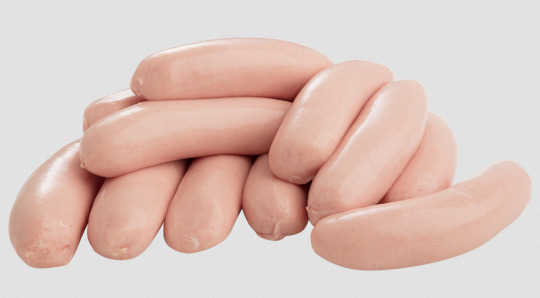
...and the bacon looked like this:

Cooked in the way Mum initially did, they looked pretty much the same afterwards. The sausages didn't change colour. Nor did the bacon.
While everything tasted fine, the meat parts always looked - to me, anyway - somewhat ... less than appealing. "Surgical appliance pink" is the kindest way to put it, and that's all I'm saying. This is apparently "white coddle" and Dubs can get quite defensive about This Is The Way It SHOULD Look.
I'm not a Dub, so I persuaded Mum to fry both the bacon and sausages first, just enough to get a bit of brown on, and wow! Improvement! I remember my Dad nodding in approval but - because he was Wise - not saying anything aloud until Mum gave it the green light as well.
Doing the coddle in the oven, first with lid on then with lid off, came later and met with equal approval. So did using only half of the onion raw and frying the other half lightly golden in the bacon fat.
Nobody quoted from a movie that wouldn't be made for another decade, but there was a definite feeling of...
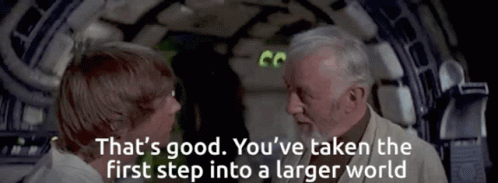
*****
There are coddle recipes all over the Net: I've made sure that these are from Ireland to avoid the corned-beef-not-boiled-bacon "adjustment" versions which are definitely out there. I've already seen one with Bratwurst. Just wait, it'll be chorizo next.
Oh, hell's teeth, I was right. And from RTE...
Returning to relative normality, here's Donal Skehan's white coddle and his browned coddle with barley (I'm going to try that one).
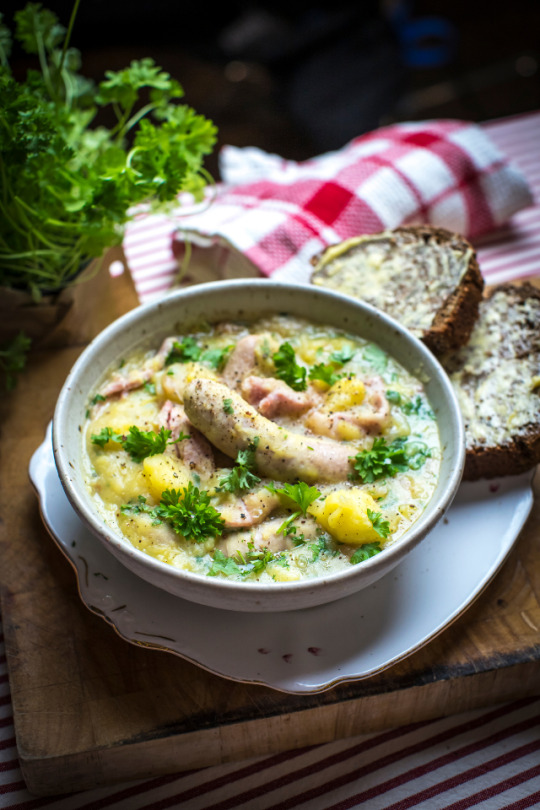
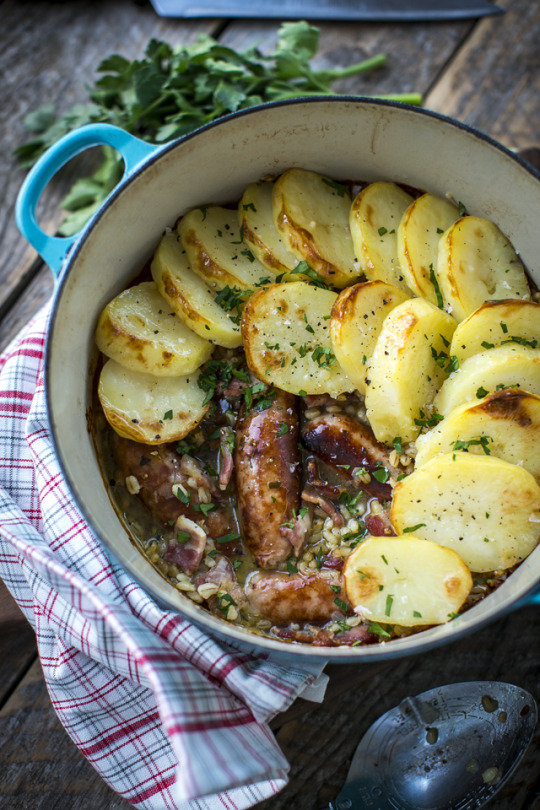
Here's Dairina Allen's Frenchified with US measurements version. (I feel considerably less heretical now.)
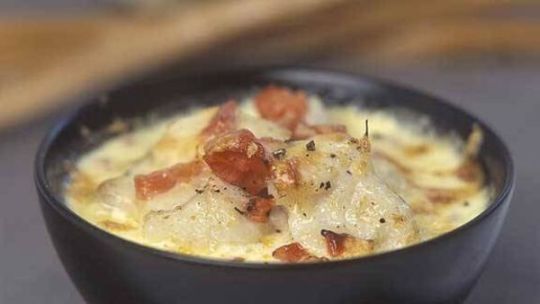
And finally (OK, not Irish, but it references a couple of the previous ones and is a VERY comprehensive write-up, so gets a pass) Felicity Cloake's Perfect Dublin Coddle (perfect according to who, exactly...?) in The Guardian.
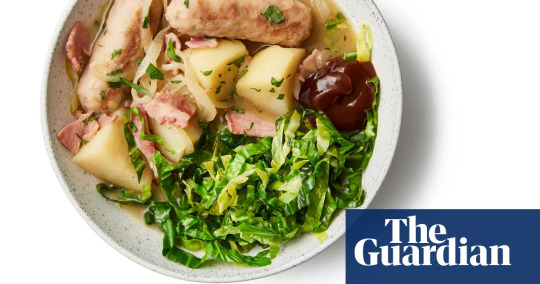
*****
Returning to the beginning, and how boiled bacon became corned beef (a question which prompted @dduane to start an entire website...!)
The traditional Irish meat animal for those who could afford it was the pig, but when Irish immigrants (even before the Great Famine) arrived in the USA, they often lived in the same urban districts as Jewish immigrants from Eastern Europe.
For fairly obvious reasons pork, bacon and other piggy products were unavailable in those districts, but salt beef was right there and far cheaper than any meat Irish immigrants had ever seen before.
Insist on tradition or eat what was easy to find? There'd have been contest - and do I sometimes wonder a bit if sauerkraut ever came close to replacing cabbage for the same reason.
The pre-Famine Irish palate liked sour tastes: a German (?) visitor to Ireland in the mid-1600s wrote about about what were called "the best-favoured peasantry in Europe", and mentioned that they had "seventy-several sour milks and creams*, and the sourer they be, the better they like them."
* Yogurt? Kefir? Skyr? Gosh...
Corned beef and Kraut as the immigrants' celebratory "Irish" meal for St Patrick's Day? Maybe, maybe not.
Time for "Immigrant Song" (with kittens).
youtube
*****
Corned beef got its name from the size of the salt grains with which the beef was prepared. They were usually bigger than kosher salt, like pinhead oats or even as large as grains of wheat, and their name derived originally from "corned (gun)powder", the large coarse grains used in cannon.
BTW, "corn" has been a generic English term for "grain" for centuries, and "but Europe didn't have corn" is an American mistake assuming the word refers to sweetcorn / maize, which it doesn't.
Lindsey Davis, author of the "Falco" series, had a couple of rants about it and other US-requested "corrections". As she points out, mistakes need corrected but "corn" is not a mistake, just a difference in vocabulary.
*****
In Ancient and Medieval Ireland pig would have included wild boar, the hunting of which was a suitable pastime for warriors and heroes, because Mr Boar took a very dim view of the whole proceeding and wasn't shy about showing it (see "wild boar" in my tags and learn more).
Cattle were for milk, butter, cream and little cattle; also wealth, status, and heroic displays in their theft, defence or recovery. It's no accident that THE great Irish epic is "The Cattle-Raid of Cooley" / Táin Bó Cúailnge (tawn / toyn boh cool-nyah).
Killing a cow for meat was ostentation on a level of lighting cigars with 100-, or even 500-, currency-unit notes. Once it had been cooked and eaten there'd be no more milk, butter, cream or little cattle from that source, so eating beef was showing off And Then Some.
Also, loaning a prize bull to run with someone else's heifers was a sign of great friendship or alliance, while refusing it might be an excuse for enmity or even war. IMO that's what Maeve of Connaught intended all along, picking undiplomatic envoys who would get drunk and shoot their mouths off so the loan was refused and she, insulted, would have an excuse to...
But I digress, as usual. Or again. Or still... :->
*****
For the most part, "pig" mean "domestic porker", and in later periods right up to the Famine, these animals were seldom eaten.
Instead, known as "the gentleman who pays the rent", the family pig ate kitchen scraps and rooted about for other foods, none of which the tenant had to grow or buy for them. These fattened pigs would go to market twice a year, and the money from their sale would literally pay that half-year's rent.
For wealthier (less poor?) farmers, pigs had another advantage. Calves arrived singly, lambs might be a pair, but piglets popped out by the dozen. A sow with (some of) her farrow was even commemorated on the old ha'penny coin...
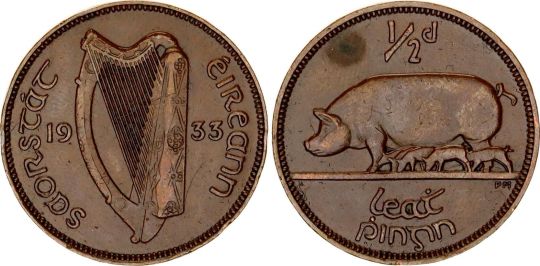
What with bulls, chickens, hares, horses, hounds, pigs, salmon and stags, the pre-decimal Irish coinage is a good inspiration for some sort of fantasy currency.
But that's another post, for another day.
#food and drink#St Patrick's Day#Irish cuisine#Dublin coddle#corned beef or boiled bacon#pigs and cattle in Ireland#The Cattle Raid of Cooley#Youtube
561 notes
·
View notes
Text
The Jewish mark on iconic Irish cuisine:
Corned Beef and Cabbage is a popular dish among Americans on St. Patricks Day. Traditionally, in Ireland, cabbage was and is paired with pork bacon.
However, during the 19th century, as Irish immigrants moved to the U.S., they discovered there was a lower-cost meat alternative to pork. It was their Jewish neighbors who introduced the cured meat and Kosher butchers to the community when they noticed some similarities in the two salty meats. Cooking the corned beef together with cabbage proved to be a low-cost and delicious solution; and the rest is history.
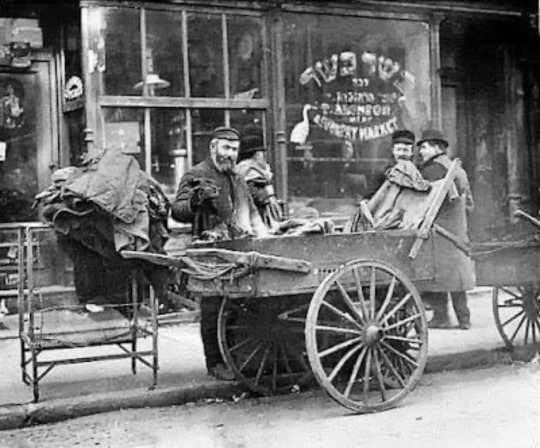
#irish#Irish antisemitism#antisemitism#israel#secular-jew#jewish#judaism#israeli#jerusalem#diaspora#secular jew#secularjew#islam#corned beef and cabbage#corned beef#cabbage#jewish history#lower East side#cuisine#food#Irish food#Irish cuisine#st patricks day#st pattys day
106 notes
·
View notes
Text
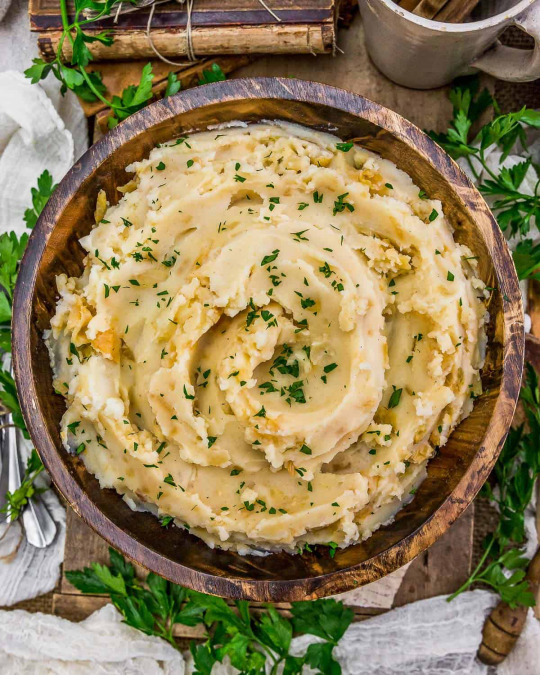
Vegan Irish Colcannon (Cabbage & Mashed Potatoes)
#vegan#appetizer#irish cuisine#st. patrick's day#mash#veganized#colcannon#mashed potatoes#potato#cabbage#garlic#onion#paprika#plant milk#apple cider vinegar#maple syrup#black pepper#sea salt
73 notes
·
View notes
Text

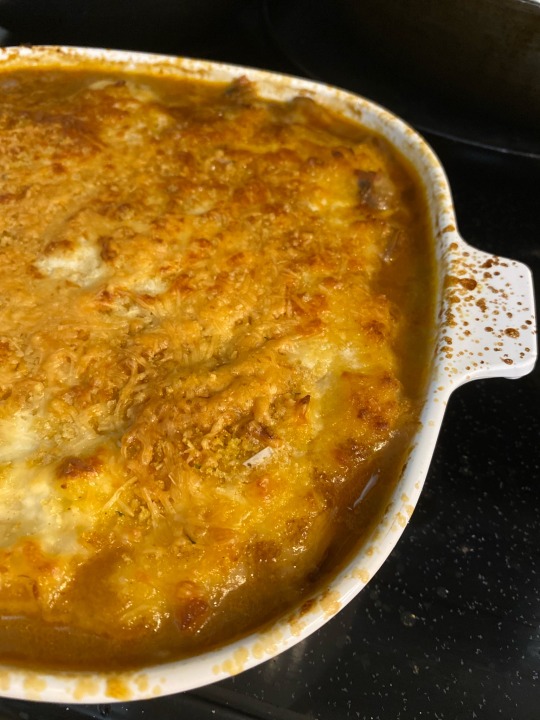
Cottage pie
8 notes
·
View notes
Text
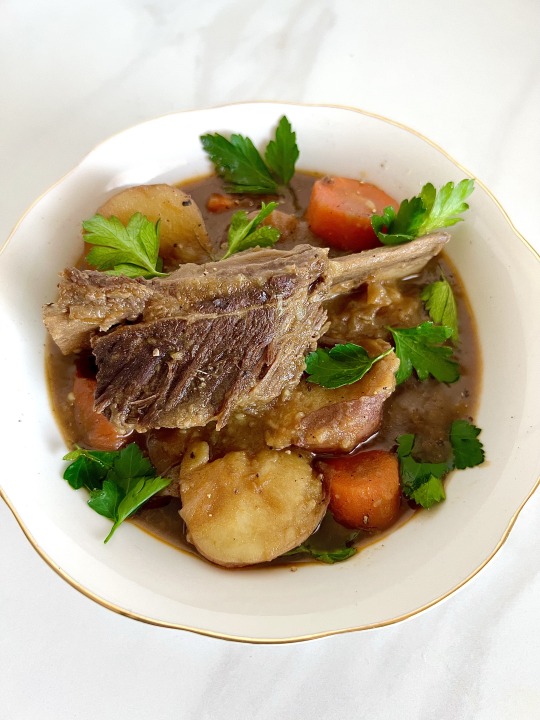
"Irish Short Rib Stew” made with Guinness Beer!!!🍺 Perfect comfort food for St. Patricks Day! ☘️
#irish beef short rib stew#beef stew#irish beef stew#irish stew#stew#guinness beer#irish food#irish recipes#irish cuisine#st patricks day#saint patricks day#food#cooking#foodies#recipes#food blog#homecooking#food pics#sikfan kitchen#st. patrick's day recipe
7 notes
·
View notes
Text
Great Recipes for Irish Spice Bag I discovered on YouTube:
youtube
youtube
youtube
#Irish spice bag#food#food video#foodie#foodgasm#foodlover#food lover#food tumblr#food stuff#irish food#chinese food#cooking#cooking video#cooking tag#cooking stuff#irish culture#irish pub#irish cuisine#multicultural#multiculturalism#Youtube
3 notes
·
View notes
Text
Saint Patrick’s Day’s Table
Saint Patrick’s Day may be a very happy one for the Irish this year, with the Ireland XV one (rugby) game away from a Six Nations Grand Slam! As I am not a sore loser, and I love good food, I may join in the craic! And with a glass of good Irish whisky and these few recipes, so can you! Cheers!
Breads, Loaves and Oatcakes
Stout Loaf
Dill Soda Bread
Cheddar and Ale Soda Bread
Donegal Oatcakes
Soda Bread II
Oatcakes
Breakfast
Boxty (Irish Potato Pancakes)
Tea
Maíre’s Potato Scones
Meat
Beer Battered Sausages
Dublin Coddle
Irish Beef and Vegetable Stew
Sides
Colcannon
Champ
Sweet and Alcoholic Drinks
Irish Hot Chocolate (Alcoholic)
Irish Coffee (Alcoholic)
#Recipes#Recipe#Recipe List#Food#Saint Patrick’s Day’s Table#Saint Patrick’s Day’s Table recipes#Saint Patrick’s Day recipes#Saint Patrick’s Day’s Table Recipe List#Irish Cuisine#Irish recipes#Irish recipe#Soda Bread#Oatcakes#Stout Loaf#Boxty#Beer Battererd Sausages#Irish Stew#Dublin Coddle#Colcannon#Champ#Irish Coffee#Irish Hot Chocolate#Winter#Winter recipes#Winter Warmers#Celebratory Food#Celebratory Drink#Happy Saint Patrick's Day#Saint Patrick's Day
17 notes
·
View notes
Text
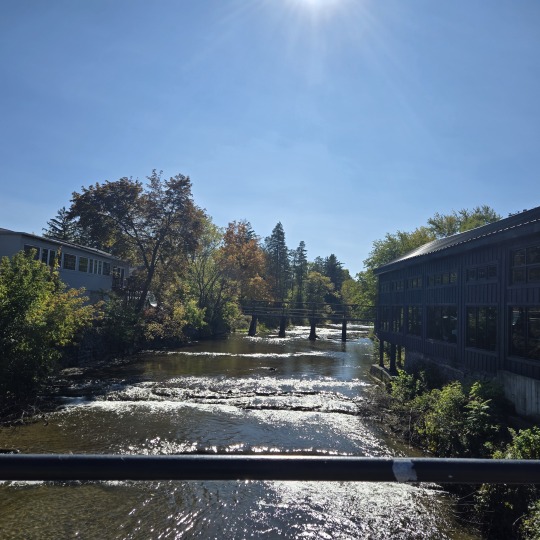
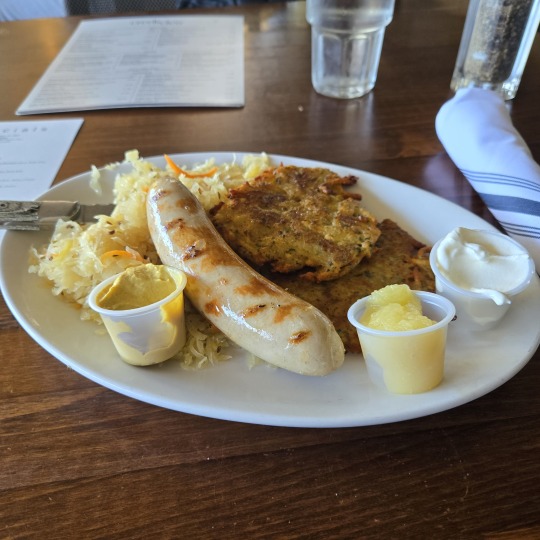

Ahhhhh, the delights of October! There's a reason I say Oktoberfest is the most wonderful time of the year~ It's brisk but not freezing, there's no snow clogging up the roads, and the colors of fall are superlatively beautiful! Plus German food for October, aw yeah! That's why I went back to my beloved Creekview for the creek view (lol) and had Weisswurst with sauerkraut and potato pancakes. I was still hongry, so I cheated a little and went to The Irishman next door, and had beef on weck egg rolls :3
#creekview restaurant#weisswurst#german food#german cuisine#food#gunfood#gunmeals#the irishman#irish cuisine
1 note
·
View note
Text
Irish Food You Shouldn't Miss When You Visit
Ireland might not be famous for its cuisine, but that’s a big mistake! If you love comfort food, you’ll love Irish food. The island’s traditional dishes are packed with flavor, history, and family love. Irish food has evolved over centuries, blending local ingredients like fresh fish, seafood, and hearty crops with influences from Britain and Europe. Thanks to its rich farming traditions,…
#boxty#Celtic food#classic Irish dishes#colcannon#Comfort Food#Dublin coddle#food in Ireland#food lovers#food travel#Guinness#Hearty Meals#hearty stews#Ireland travel#Ireland&039;s best dishes#Irish barmbrack#Irish beverages#Irish bread#Irish breakfast#Irish coffee#Irish cuisine#Irish culinary heritage#Irish culture#Irish dairy#Irish delicacies#Irish desserts#Irish drinks#Irish farming#Irish fish chowder#Irish history#Irish hospitality
0 notes
Note
@dduane called upstairs and told me: "Neil's got one for you!"
Well, maybe not me specifically, but here goes... :->
Black pudding is the Irish / UK name for a sausage made with blood - pig, cow or sheep - rather than chopped or minced meat as the main ingredient, forms of which are found in cuisines all over the world.
Black pudding can be long or short, straight or curved ("stick" or "ring"), and sometimes even a cake or terrine.


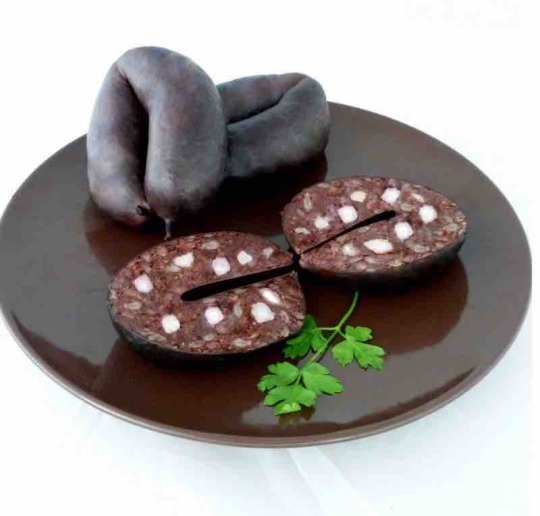
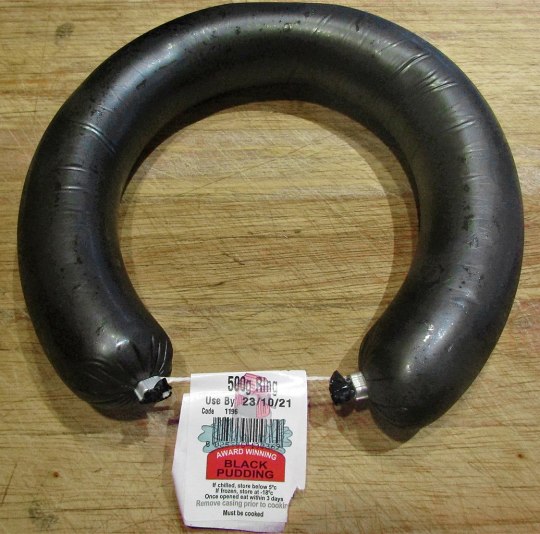
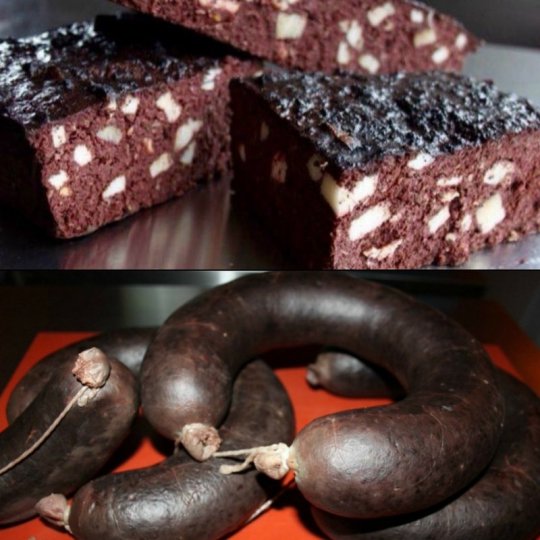
The "pudding" part, which USAians associate with a sweet dessert, comes from the French word "boudin" (boudin noir is French blood sausage) and seems to have something to do with "edible material inside a wrapper" - the wrapper may also be edible, like the skin on a sausage or black pudding...

...and the suet crust of a steak-and-kidney pudding...
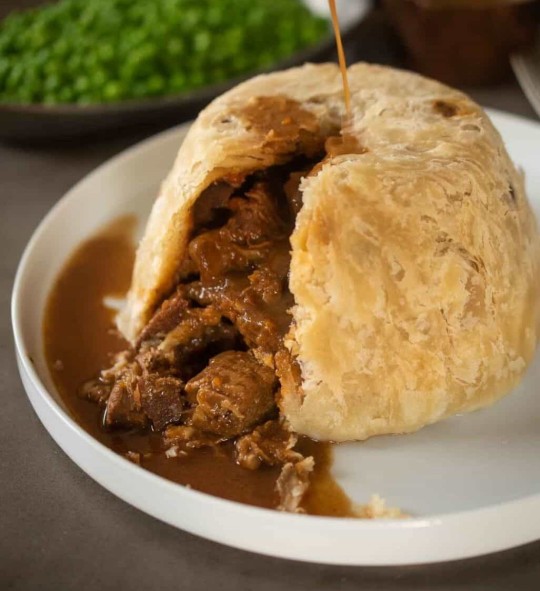
...or inedible like the cloth or bag used for a boiled pudding. This is how Christmas puddings used to be made, hence Dickens writing that the Cratchit house smelled like a laundry, and why traditional images show them as spherical with a sprig of holly on top.

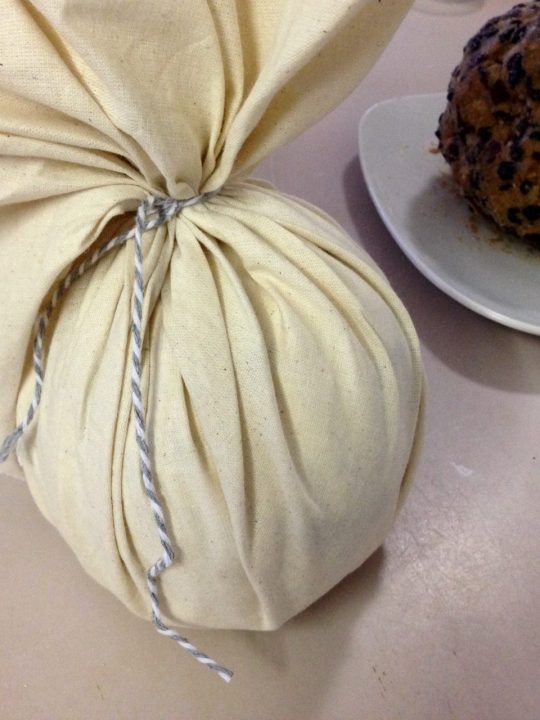
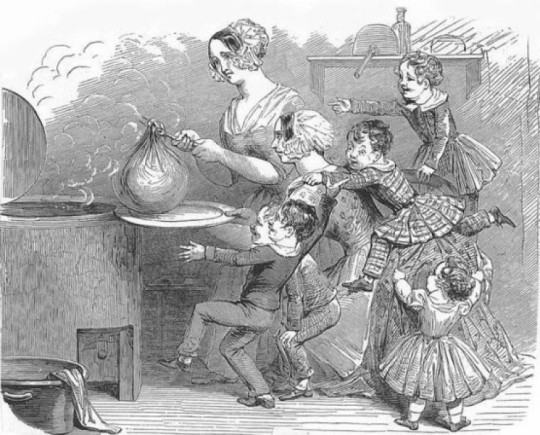

Black puddings are also boiled before going on sale, so they're actually cooked and ready-to-eat, though I've never heard of anyone hereabouts doing so.
Usually they become an ingredient in a recipe such as this salad (one of DD's Middle Kingdoms dishes)...
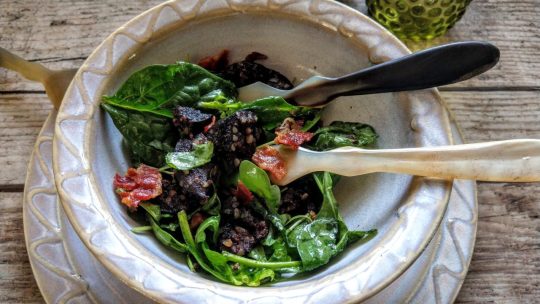
... or appear sliced as part of a fry-up.
The black puddings I'm most familiar with (Irish / UK) mostly use pig-blood, oats or barley and various herbs and spices. They're a standard part of a Full Irish Breakfast / Ulster Fry - just the sort of thing to start a day that involves ploughing a 40-acre field behind two Shire horses, though perhaps best eaten infrequently if just sitting at a desk.
This is pretty close to the sort of Ulster Fry I grew up with, including the black pudding...
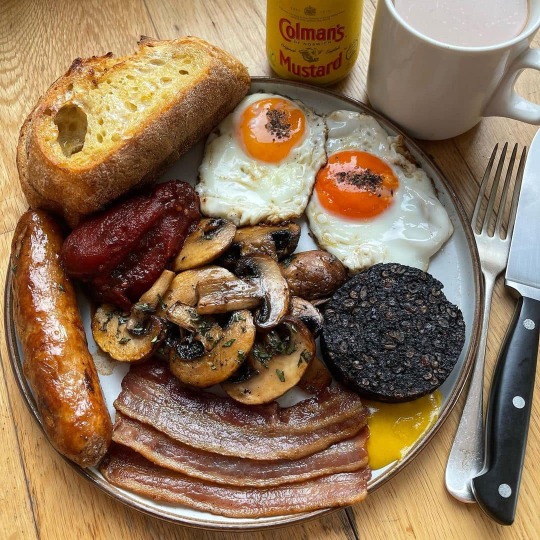
...though there should also be a slice of white pudding (minced pork, oats or barley, spices) and that ordinary fried bread, nice though it looks, would be a half farl of soda and a couple of farls of potato bread instead.
(For those familiar with a Full English Breakfast and wondering "Why no baked beans?", AFAIK there should never be baked beans with an Ulster Fry since, unlike everything else, they can't be fried - which, as the name suggests, is the whole point...)
Black puddings were used as weapons (!) for "the Yorkshire martial art of Ecky Thump" (!!) in an episode of 1970s comedy show "The Goodies"; this is the notorious episode where a TV viewer died of laughter...
There are regional variants of black and white pudding all over these islands: Stornoway black pudding from Scotland, Pwdin Du from Wales, Bury black pudding in the Midlands (oops!) North-West *, Hog's Pudding in the West Country and so on.
( * Lancashire, where the martial art is By 'Eck. Possibly.)
Perhaps the best known Irish black pudding variant is "drisheen" from Cork and Limerick; its signature herb is tansy, and oatmeal rather than barley gives a softer texture than regular pudding.

Cork and Limerick were major Viking settlements, so I wonder if there's some association between drisheen with tansy and Scandinavian blood sausages with marjoram and other herbs.
That notion was first prompted by Frans Bengtsson's well-researched novel "The Long Ships"; Michael Meyer's excellent translation is the usual English version.
There, black pudding - or at least blood sausage "with thyme in it" - provokes a tearful emotional response from two hard-bitten Vikings who, after several years as slaves then mercenaries in Andalusian (Muslim) Spain, get their first taste of Real Grub at King Harald Bluetooth's Yule feast.
The book version's a bit long, but you can get the picture (hah!) from a couple of frames of the graphic novel.

Wild boar, bread cakes and fried turnips were carried in, but when the blood-sausage came, Orm and Toke got tears in their eyes. "That scent is best of all!" "There's thyme in it..."

"Please, if it's not against Harald's orders, could we have some more? For seven years we've been eating vegetables in the land of the Andalusians. We've missed seven Yules-worth of blood-sausage!"
Back in 1987, I felt the same way about foods from home after only 6 months in Los Angeles - and yes, one of those foods was black pudding...
So I'm the one who asked about the beans in the English breakfast a day ago and I was reading the notes and-- what the actual fuck is black pudding? Never heard of it, not sure I even want to know, but now I feel bad for missing ANOTHER thing in the English breakfast.. also my dad devoured the food before my mom could say "beans are off, love" but we will remember it for next time!
I will let someone in the notes describe and explain Black Pudding. Someone will take joy in it.
#food and drink#black pudding#blood sausage#irish cuisine#uk cuisine#the long ships#book recommendations
3K notes
·
View notes
Text


Vegan Irish Curry
#vegan#lunch#dinner#irish cuisine#st. patrick's day#curries#veganized#irish curry#potato#carrots#lentils#bell peppers#tomatoes#chickpeas#garlic#onion#curry#cumin#paprika#turmeric#cilantro#black pepper#sea salt#rice bowl#rice
56 notes
·
View notes
Text
Sigginstown Pottage
One of the most basic dishes of the medieval period - and in any culture, pretty much - is the pottage. This is basically "stuff cooked in a pot with water", which is a very broad definition. This particular "recipe" is one that I think is straightforward enough, uses common enough ingredients, and is palatable enough that it was almost certainly made in pre-Norman Ireland (by statistical inevitability, if nothing else). I've given it the name of "Sigginstown Pottage" because I first made it at Sigginstown Castle, and it's useful to have a name by which to refer to it.
1 smoked pale ham, chopped into 1cm cubes 2 onions, chopped (or some celery, also chopped) 2 leeks, roughly chopped 6 carrots, roughly chopped c. 500g pearl barley, bulgur wheat, or other likely whole grain Water to cover
Put everything above into a pot, and simmer until the meat and grains are cooked. Taste and season with some black pepper if needed. Serve hot.
Some observations: Onion is the more "authentic" between it and celery, but both were available. I've been going easy on onions lately due to food sensitivities. Leeks are absolutely a period Irish food, and possibly close to a staple; they're mentioned a fair bit in texts.
The pale ham (I don't know if this is known outside Ireland; it's a small chunk of cured ham, which is pretty salty) provides enough salt that you shouldn't need to add any more. The smoking is pretty solidly attested in period by the number of bones we see with holes for hooks.
You'll see some people claiming that carrots only arrived in Ireland with the Normans, but there are carrot seeds in the archaeobotanic remnants from Viking Dublin, and there's an old Irish word, meacon, which denotes tap-rooted vegetables like parsnips and carrots, but is usually used for carrots. So I'm pretty confident in including these.
The end result is a very solid, stick-to-the-ribs kind of stew; good eating for colder weather or when you've been doing physical work. I've only ever cooked it in cast iron, and it turns out that if you leave the leftovers in the pot overnight, the combination of whole grains and iron results in a horrifically grey stuff, which still tastes fine, but looks absolutely awful. So eat it hot, and don't leave leftovers.
#pre norman ireland#pre norman irish cuisine#pre norman irish food#irish food#irish medieval food#sca#medieval cooking#medieval food#viking ireland#norse ireland#sigginstown#sigginstown pottage#barley#carrots#leeks#onions#ham#cast iron
44 notes
·
View notes
Text
Irish Boxty: Crafting Authentic Potato Pancakes for a Taste of Tradition

Start a cooking trip to the heart of Ireland with the classic as well as precious recipe, Irish Boxty. In this assist, we will look into the art of developing standard potato pancakes, using you a preference of Irish heritage that's both hearty as well as gratifying. Sign up with us as we unwind the keys to crafting the best Boxty that pays homage to this valued Irish cooking practice.
Area 1: A Look right into Irish Cooking Heritage
Submerse on your own in the abundant cooking heritage of Ireland as we discover the beginnings of Boxty. This famous recipe, renowned for its simpleness as well as heartiness, is a staple in Irish cooking areas for generations, personifying the significance of convenience food.
Area 2: Crucial Active ingredients
Uncover the crucial active ingredients that bring credibility in your Irish Boxty. From floury potatoes to all-round flour as well as buttermilk, each part plays an important duty in attaining the best stabilize of appearance as well as taste. Reveal the magic that changes modest active ingredients right into a mouthwatering Irish joy.
Area 3: Grating Strategies for Perfect Appearance
Understand the art of grating potatoes to attain the perfect Boxty appearance. Discover the value of harmonizing the starch content, as well as find out the best ways to mix grated potatoes effortlessly with flour as well as buttermilk. This careful procedure makes sure a pancake that's both crunchy outside as well as tender on the in.
Area 4: Delicious Variants
Boost your Boxty experience by discovering delicious variants. From timeless dishes to those including natural herbs, onions, or also cheese, uncover the best ways to instill your potato pancakes with a ruptured of added preference while keeping the dish's genuine beauty.
Area 5: Food preparation Strategies
Reveal the keys to improving the food preparation strategies that generate gold, crunchy Boxty. Whether you like pan-frying or cooking, we will assist you via the actions to attain that ultimate Irish pancake that sets well with a selection of toppings.
Area 6: Offering Ideas
Indulge in the adaptability of Irish Boxty with imaginative offering ideas. From a passionate morning meal accompaniment to a side recipe for stews as well as soups, this standard potato pancake could be took pleasure in in numerous cooking contexts. Release your creative thinking in offering this Irish timeless.
Verdict:
Finally, understanding the art of crafting Irish Boxty permits you to bring the heat of Ireland's cooking heritage in your table. With its modest yet delicious active ingredients as well as functional applications, Boxty isn't simply a pancake; it is a party of practice as well as preference. Dive right into the heart of Irish food preparation with our detailed assist as well as relish the happiness of developing this precious recipe in your personal cooking area.
Tags : Irish Boxty, Traditional Potato Pancakes, Irish Culinary Heritage
#Irish Boxty#Traditional Potato Pancakes#Irish Culinary Heritage#Authentic Boxty Recipe#Key Ingredients for Boxty#Grating Techniques for Potato Pancakes#Flavorful Boxty Variations#Cooking Techniques for Golden Pancakes#Creative Boxty Serving Ideas#Ireland's Comfort Food#Heartiness of Irish Cuisine#Classic Boxty Preparation#Irish Potato Pancake Tradition#Versatile Boxty Applications#Homemade Boxty Delight#Breakfast with Irish Boxty#Side Dish for Stews and Soups#Crispy and Tender Boxty#Boxty Toppings Inspiration#Culinary Joy of Making Irish Boxty
3 notes
·
View notes
Text

Irish Shepherd’s Pie 🥧 Happy St. Patrick’s Day!!! ☘️
#shepherds pie#irish shepherds pie#st patricks day#st patricks day recipes#st patricks day foods#irish foods#irish recipes#irish cuisine#sikfan kitchen#food#cooking#foodies#recipes#food blog#homecooking#food pics#saint patricks day
6 notes
·
View notes
Text
Irish Cuisines Delight Guests at the 2nd Irish Film Festival of India

Noida: The second edition of the Irish Film Festival of India at Marwah Studios in Noida Film City added a special touch this year with a unique showcase of traditional Irish cuisine, presented by the AAFT School of Hospitality and Tourism. The festival, a celebration of Irish cinema and culture, was further enriched by the introduction of authentic Irish flavors, delighting attendees and honoring the essence of Ireland.
The distinguished guests included Raymond Mullen, Deputy Ambassador of Ireland to India, Dr. Sandeep Marwah, President of Marwah Studios, Mike Berry from Universal Studios, celebrated actor and filmmaker Nileish Malhotra from Mumbai, Dr. Neeraj K Sharma, Consul General of Palau, and Siraz Zaidi, an actor and filmmaker from Dublin. These esteemed individuals sampled the Irish dishes, which were specially prepared for the occasion, bringing an authentic taste of Ireland to the Indian audience.
Festival attendees were pleasantly surprised by the presence of Irish cuisine at the event. The culinary offerings were a delightful addition to the cinematic experience, as the audience relished the flavors of Ireland, complementing the cultural immersion brought by the film screenings. The food received high praise not only for its taste but also for the thoughtful presentation, which captured the spirit of Irish hospitality and culinary tradition.
“Events like this allow us to explore and appreciate different cultures in their entirety. We are thrilled to offer Irish cinema enthusiasts not only exceptional films but also a culinary experience that reflects Ireland’s rich cultural heritage,” remarked Dr. Marwah.
The Irish Film Festival of India, organized by the Indo-Ireland Film and Cultural Forum in association with the Embassy of Ireland in India and the International Chamber of Media and Entertainment Industry, continues to serve as a bridge of cultural exchange, providing Indian audiences with an immersive experience of Irish culture through cinema, cuisine, and more.
#Irish Cuisines Delight Guests at the 2nd Irish Film Festival of India#Dr. Sandeep Marwah President of AAFT
0 notes
Text
The Rugby World Cup Table

In France, there is something specific to Rugby we call "la troisième mi-temps" (third half-time), where both winning and losing teams and supporters gather after a game for a bite and a pint! In that spirit, as our home World Cup comes to a close tonight, I am celebrating all the teams that took part and played exciting, enthralling rugby (sometimes breaking our hearts!) all across France this past couple of months, sharing recipes from all the countries represented. I really enjoyed delving into national cuisines I did not know, and perhaps some future travels will be inspired by these delicious discoveries! In the meantime, I'll be happy eating, whether New Zealand or South Africa lifts their fourth Webb Ellis Trophy!
Pool A
Confit Duck (France)
Manuka Honey Glazed Ham (New Zealand)
Melanzane alla Parmigiana (Italy)
Pasta con Salsa Caruso (Uruguay)
Ombidi and Mielie Pap (Namibia)
Pool B
Beer Battered Sausages (Ireland)
Regte Braaibroodjie (South Africa)
Scots Apple Crumble (Scotland)
Ota Ika (Tonga)
Griș cu Lapte (Romania)
Pool C
Haddock Welsh Rarebit (Wales)
Vudi Vakasoso (Fiji)
Aussie Burgers (Australia)
Pastéis de Nata (Portugal)
Abkhazura (Georgia)
Pool D
Chicken Pot Pie (England)
Guiso Carrero (Argentina)
Salmon Chirashi (Japan)
Kopai (Samoa)
Chupe de Camarones (Chile)
#Recipes#Food#The Rugby World Cup Table#The Rugby World Cup Table recipes#The Rugby World Cup Table Recipe List#Rugby World Cup#RWC#Rugby World Cup 2023#RWC 2023#France 2023#French Cuisine#New Zealand Cuisine#Namibian Cuisine#South African Cuisine#Italian Cuisine#British Cuisine#Irish Cuisine#South American Cuisine#Portuguese Cuisine#Romanian Cuisine#Georgian Cuisine#Pasifika Cuisine#Japanese Cuisine#Rugby#Food and Sport
4 notes
·
View notes